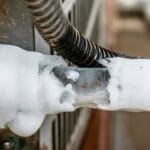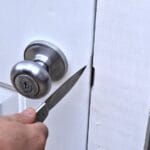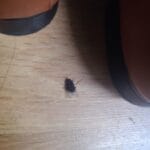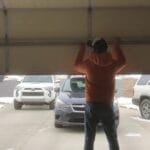An Estate washer not spinning can be frustrating. This problem can disrupt your laundry routine.
When your Estate washer stops spinning, it can be due to several reasons. From simple fixes like redistributing the load to more complex issues like a faulty motor, understanding the cause is crucial. This blog will help you troubleshoot and possibly fix the spinning issue.
We’ll explore common reasons and steps you can take before calling a professional. Whether you’re a DIY enthusiast or just trying to save some money, this guide will provide clear instructions. So, let’s dive in and get your washer back to working smoothly.

Credit: m.youtube.com
Common Causes
Is your Estate washer not spinning? This common problem can be frustrating. Understanding the usual causes can help you fix it. Here are some reasons why your washer might not be spinning properly.
Lid Switch Issues
The lid switch is a safety feature. It stops the washer from spinning if the lid is open. If this switch is faulty, the washer won’t spin. Check the lid switch for any visible damage. You can test it with a multimeter. If it doesn’t show continuity, replace it.
Drive Belt Problems
The drive belt connects the motor to the drum. It helps the drum spin. If the belt is worn out or broken, the washer won’t spin. Inspect the belt for wear and tear. Replace it if you see cracks or fraying. A new belt can fix the spinning issue.
Initial Checks
When your Estate washer is not spinning, it can be frustrating. But before calling a repair service, there are some initial checks you can perform. These simple checks can often identify the problem and save you money. Let’s explore the most common issues.
Power Supply
First, verify the power supply to the washer. Ensure the washer is properly plugged in. Check the outlet by plugging in another device to see if it works. If the outlet is dead, check your home’s circuit breaker or fuse box. Sometimes, the washer’s power cord may be damaged. Inspect it for any visible signs of wear or fraying.
Load Balance
An unbalanced load can prevent the washer from spinning. Open the lid and redistribute the clothes evenly inside the drum. Ensure the load is not too heavy. An overloaded washer may not spin properly. Try running the washer with a smaller load to see if it spins.
If the washer is still not spinning, check if the machine is level. An unlevel washer can cause imbalance issues. Adjust the washer’s feet to ensure it sits flat on the floor.
Inspecting The Lid Switch
Is your Estate washer not spinning? The lid switch might be the culprit. The lid switch prevents the washer from spinning when the lid is open. If the switch is faulty, the washer won’t spin. Let’s learn how to inspect it.
Locating The Lid Switch
First, locate the lid switch. Open the washer lid. The switch is usually near the door frame. It’s a small plastic piece. Some models have it on the right side. Others place it at the back. Check your manual if unsure.
Testing The Lid Switch
Testing the switch is simple. You’ll need a multimeter. Set it to the continuity test mode. Unplug the washer for safety. Remove the switch from the washer. Connect the multimeter probes to the switch terminals.
If the switch is good, the multimeter will beep. No sound means the switch is bad. Replace it if needed. A working lid switch ensures safe operation. It also helps the washer spin properly.
Credit: www.reddit.com
Examining The Drive Belt
Is your Estate washer not spinning? It might be due to a worn-out drive belt. The drive belt connects the motor to the drum. It helps the drum spin. Examining the drive belt can help you find the problem. Let’s break it down step by step.
Accessing The Drive Belt
First, unplug the washer. Safety first. Next, remove the back panel of the washer. You will see the drive belt wrapped around pulleys. It’s near the bottom of the washer. Carefully inspect it.
Signs Of Wear And Tear
Look for cracks on the belt. Check for fraying or splitting. A loose belt is also a problem. If the belt is too loose, it will not grip the pulleys. This causes the drum to not spin.
If the belt shows any of these signs, it needs replacing. A new belt can restore your washer’s spinning function. Always use a replacement part that fits your specific model.
Motor Coupling
The motor coupling in your Estate washer is a crucial component. It connects the motor to the washer’s transmission. This small but vital part ensures the drum spins correctly. A faulty motor coupling can stop the washer from spinning.
Identifying Motor Coupling Issues
Several signs point to motor coupling issues in your Estate washer:
- Noisy Washer: If you hear a loud noise during the spin cycle, it might be the motor coupling.
- Drum Not Spinning: When the drum fails to spin, the motor coupling might be broken.
- Burnt Smell: A burnt smell could indicate the motor coupling is worn out.
These signs are easy to spot. If you notice any of them, the motor coupling may need attention.
Replacing The Motor Coupling
Replacing the motor coupling is straightforward. Follow these steps:
- Unplug the Washer: Safety first. Always unplug the washer before starting.
- Access the Motor: Remove the washer’s cabinet to access the motor.
- Locate the Motor Coupling: Find the motor coupling between the motor and the transmission.
- Remove the Old Coupling: Carefully remove the old motor coupling.
- Install the New Coupling: Place the new motor coupling in the same position.
- Reassemble the Washer: Put the washer back together and plug it in.
Once replaced, your washer should spin correctly. If you are unsure, consult a professional. This ensures the job is done safely and accurately.
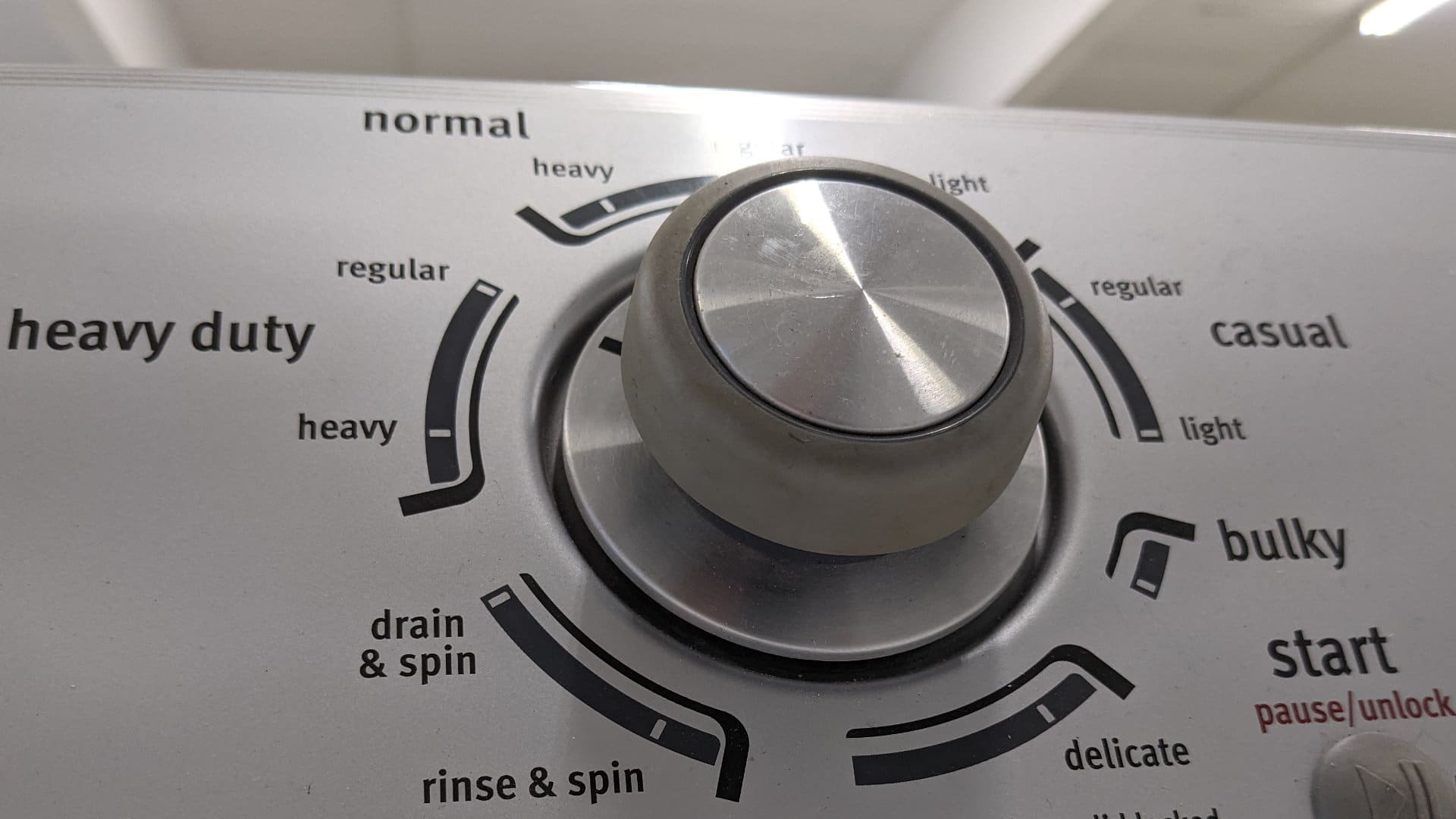
Credit: fredsappliance.com
Checking The Clutch
Is your Estate washer not spinning? The problem might lie in the clutch. The clutch helps the washer transition between spin and agitate modes. A faulty clutch can prevent your washer from spinning properly. Let’s dive into how to check and replace the clutch.
Clutch Assembly Inspection
Start by unplugging the washer for safety. Next, access the clutch assembly. You will find it near the motor. Check for any visible wear or damage. Look for signs of burning or a worn-out lining. If you notice any issues, it’s time to replace the clutch.
Clutch Replacement Steps
First, gather your tools. You will need a screwdriver, pliers, and a new clutch. Begin by removing the washer’s cabinet. Locate the motor and transmission assembly. Disconnect the motor wires and remove the motor mounting screws. Carefully pull out the motor and set it aside.
Next, remove the old clutch. Pay attention to how it is attached. This will help you install the new one correctly. Once the old clutch is out, install the new clutch. Reattach the motor and secure it with screws. Reconnect the motor wires. Finally, put the washer cabinet back in place.
Plug in the washer and run a test cycle. Check if the washer spins properly. If it does, you have successfully replaced the clutch.
Transmission Troubles
The transmission is the heart of your Estate washer’s spin cycle. If it’s not working, your washer won’t spin. Understanding transmission issues helps you diagnose and fix the problem.
Symptoms Of Transmission Failure
Transmission issues show clear signs. Here are common symptoms of transmission failure:
- Washer Not Spinning: The washer drum doesn’t move during the spin cycle.
- Loud Noises: You hear grinding or clanking sounds during operation.
- Burning Smell: A burnt smell may indicate transmission issues.
- Leaking Oil: Oil stains under the washer suggest a transmission oil leak.
- Agitation Problems: The drum fails to agitate during the wash cycle.
Repairing The Transmission
Repairing the transmission can be complex. Follow these steps to address the issue:
- Unplug the Washer: Ensure safety by disconnecting the power.
- Access the Transmission: Remove the washer’s back panel.
- Inspect for Damage: Look for broken or worn-out parts.
- Replace Faulty Components: Install new parts if needed.
- Reassemble the Washer: Put the back panel and other components back.
- Test the Washer: Plug in and run a spin cycle to check repairs.
If these steps seem daunting, seek professional help. A technician can ensure a proper fix.
Professional Help
If your Estate washer isn’t spinning, you might need professional help. A technician can diagnose and fix the problem. This prevents further damage. It also ensures your washer works efficiently. But when should you call a technician? And how do you choose a reliable service? Let’s explore.
When To Call A Technician
You should call a technician if basic troubleshooting doesn’t work. For example, checking the power supply or resetting the washer. If the drum still doesn’t spin, it’s time for professional help. Unusual noises are another sign. Grinding or squeaking sounds indicate a serious issue. Water not draining is also a red flag. It can damage your washer. Call a technician to avoid costly repairs.
Choosing A Reliable Service
Choosing a reliable service is crucial. First, check reviews online. Positive reviews indicate good service. Second, ask for recommendations. Friends and family can suggest trusted technicians. Third, check credentials. A licensed technician is a safer choice. They have the necessary skills. Finally, ask about warranties. Good services offer guarantees on their work. This gives you peace of mind.
Frequently Asked Questions
Why Is My Estate Washer Not Spinning?
Your Estate washer may not spin due to a faulty lid switch. Check and replace if needed.
How Do I Reset My Estate Washer?
Unplug the washer for 1 minute. Plug it back in. This resets the washer.
Can A Blocked Drain Cause Spinning Issues?
Yes, a blocked drain can prevent the washer from spinning. Clear any blockages to fix this.
What Should I Do If The Washer Is Overloaded?
Remove some clothes. Overloading can stop the washer from spinning. Balance the load.
How Often Should I Clean The Washer Filter?
Clean the washer filter every 3-4 months. This helps maintain proper spinning function.
Conclusion
Fixing an Estate washer that is not spinning can be simple. Check common issues like unbalanced loads, clogged hoses, or faulty belts. Ensure the lid switch is functioning. Regular maintenance can prevent future problems. Always unplug the washer before troubleshooting.
If problems persist, consider professional help. A properly working washer saves time and effort. Your laundry chores become easier, and clothes come out clean and fresh. Keep your washer in good condition for best performance. Happy washing!


